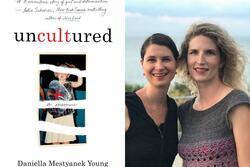Honoring the Shmita Year
My parents have been participating in Daf Yomi since the beginning of the latest cycle in January 2020. Although the topics of what they’re reading in the Talmud are sometimes jarring and intense, and I often wonder why they even put up with trying to decipher it, I commend their dedication. The Daf Yomi cycle is seven and a half years, and the Shmita cycle is a similar seven years. So, naturally, with the Shmita year just finishing up and the daily Daf Yomi insights continuing, conversations at the dinner table tend to involve the two.
Seeing how my parents read their daily Talmud on an iPad, which the early Rabbis probably never could have imagined, leaves me wondering how the Shmita cycle can be implemented in our modern, and often non-agricultural, lives. The cycle of Shmita allows for six hard years of work, but it emphasizes that we must give our land rest in the seventh year, or else the land will no longer be willing or even able to sustain us.
No one at the time of the Torah could have expected what the world would eventually look like, with greenhouse gasses trapped in our atmosphere or private jets polluting the air at an astounding rate. Various Jewish organizations have been established to organize the Jewish community around the preservation of our planet. The establishment of new organizations to take on new challenges from a Jewish lens is, to me, the most admirable part of Judaism: through our community comes a people mobilized to make changes.
Shomrei Adamah (Keepers of the Earth), a Jewish environmental organization with a mission “to illuminate and make accessible the ecological roots of Jewish tradition and to inspire Jewish individuals and institutions to care for the earth and act on her behalf,” was one of the first Jewish activist organizations to focus on environmentalism. Rabbi Ellen Bernstein, Shomrei Adamah’s founder, is an author and feminist activist. Bernstein founded Shomrei Adamah because she saw a lack of Jewish participation in environmentalism. Her books explore the intersection between Judaism and environmentalism in places ranging from holidays like Tu B’Shvat and Passover to the Torah. Rabbi Bernstein’s efforts will continue to be an inspiration for the next waves of eco-feminism.
Rabbi Bernstein also helped revive the holiday of Tu B’Shvat by making it accessible to everyone in small ways. One of her books, A New Year for the Trees, is a Tu B'Shvat Haggadah. Usually, haggadot are the textual guides for the Passover seder, and before researching Bernstein, I had never seen a haggadah for a different Jewish holiday before. I really like the idea of taking parts from one holiday and implementing them in a different one.
Taking inspiration from Bernstein’s efforts with Tu B’Shvat, I wonder what a Shmita haggadah might look like.
Like our day of rest every seven days (Shabbat), in Judaism, every seven years we are meant to observe a Shmita year, when the agricultural cycle resets and we allow the land to rest. Shmita is introduced to us in the third book of the Torah, showing its critical importance to Jews from the very beginning of our traditions. In a world where most Jews aren’t farmers, Shmita doesn’t just have to be about farming. It could serve as a cyclical wake-up call for all of us: What can I be doing to protect the environment?
A Shmita guide might look like a seven-year long-term planner, that prompts you with questions like, “What will you do every day for the next seven years to better the environment?” or “What will you hope to have accomplished by the time the next Shmita cycle restarts?” The prompts could be answered in small ways, maybe by recycling every day or committing to shaving off three minutes in the shower. Through Bernstein’s approach of following a guide and actively learning from others, the environment can become part of our positive daily practices. Simultaneously, the Torah’s call for Shmita will be remembered and cherished even in the off years. The Shmita cycle shouldn’t mean that we work the land until its breaking point and then give it a rest. It is, instead, a cycle we are always in, where we should always be aware of our impact on our natural resources, making sure that we aren’t taking more than the Earth can handle.
Right now, there are many local and national efforts to bring awareness to climate change and environmental protection. In Chicago, my hometown, we just passed a bill for the protection and preservation of the Cook County Forest Preserves. Bernstein’s written environmental guides give people the knowledge that would be useful to make educated decisions about how to protect our environment, like voting for this kind of legislation. As I’m writing this post, I’m thinking of ways that I can start my practices for this new Shmita cycle. Visiting Illinois’ forest preserves sounds like an amazing opportunity to learn about my state while introducing new environmental practices into my life.
Shmita is a seemingly obscure set of laws in the Torah that even many Jews know little about. But, using the tools that educators like Rabbi Ellen Bernstein suggest, the observance of Shmita can become a meaningful cultural custom, in both the “on” and the “off” years. Environmentalism must be observed every day, and I think that it's beautiful in Judaism to have traditional practices that we can adapt to present times.
This piece was written as part of JWA’s Rising Voices Fellowship.







